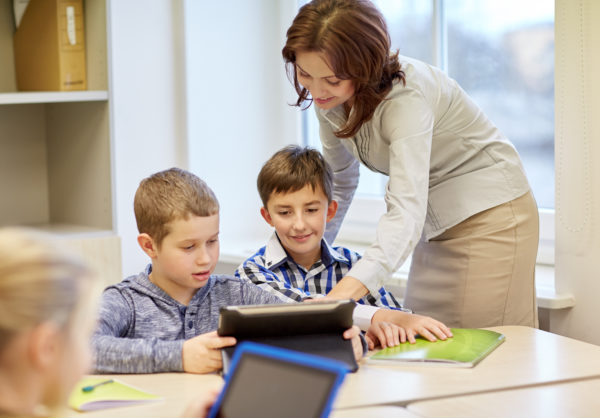Key points:
- Educators know that interactive instructional approaches are more likely to engage students, but they must integrate technology in meaningful ways
- Gamifying lessons can help students focus while increasing engagement
- Turn lectures into back-and-forth conversations between teachers and students
- Consider peer instruction
Educators who want to reach students who favor interactive communication know that integrating digital tools into their lesson plans can be an effective strategy, and many have incorporated technology tools into the classroom in one way or another.
But to make a real difference, educators have to integrate technology in a meaningful way. It’s not sufficient to just use social media platforms as an alternate communication venue or post schedules on a class Facebook page.
So how can educators use technology in a more meaningful way? Following are three methods educators are successfully using to connect with a new generation of students in the classroom.
Next page: Three ways to make learning more engaging and interactive
Gamify lessons
Friendly competition can improve focus and drive better results, which is why gamification is a hot trend in corporate training and educational circles. Teachers can gamify lessons by integrating competition into classroom presentations in a number of ways. For example, a gamification feature in presentation software can enable educators to set up teams or allow individual students to respond to embedded questions and display aggregate results on a screen; some software solutions also feature a leaderboard so everyone can monitor progress.
A gamification approach is highly effective in getting all students involved in classroom activities and providing educators with data they can use to assess student progress.
Turn lectures into a 2-way conversation
Students who are used to highly interactive communication often have difficulty adjusting to traditional classroom lectures, where they are expected to silently take notes while the instructor speaks. Educators who are looking for new ways to engage students can turn top-down lectures into two-way conversations with technology. By embedding questions into presentation slides and allowing students to transmit
answers via response technology, teachers can give students a voice in the classroom.
Use peer instruction to enhance the learning experience
Harvard Professor Eric Mazur pioneered a learning strategy known as “peer instruction,” a proven methodology that encourages direct student participation in learning exercises and harnesses pupils’ collective knowledge to deliver measurable improvements in learning. Peer instruction is similar to crowdsourcing in that it leverages group wisdom to reach goals that individuals can’t easily achieve on their own.
Crowdsourced learning is an excellent strategy for students who thrive in interactive settings. It allows students to actively participate in the learning process, communicating with fellow students to explore solutions and formulate responses. Learning software that enables instructors to embed questions in presentations and tally aggregate responses can facilitate peer instruction.
- Friday 5: Universal Design for Learning - April 19, 2024
- Educators love their edtech, but want more training - April 18, 2024
- Friday 5: College and career readiness - April 12, 2024


